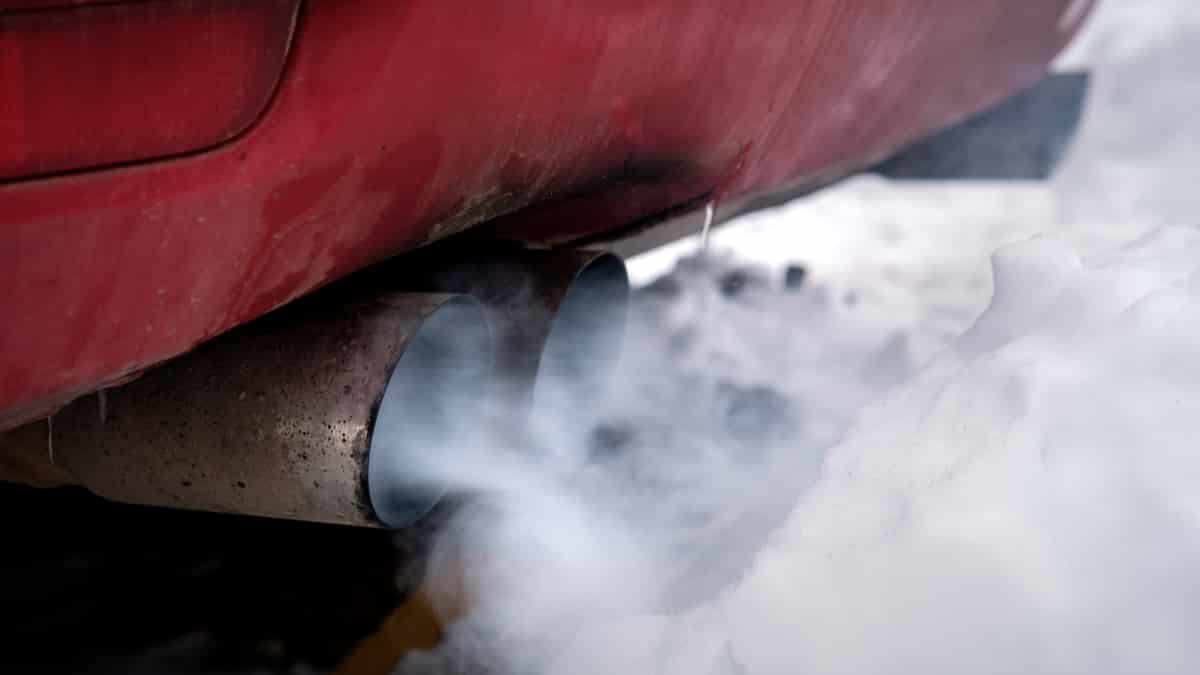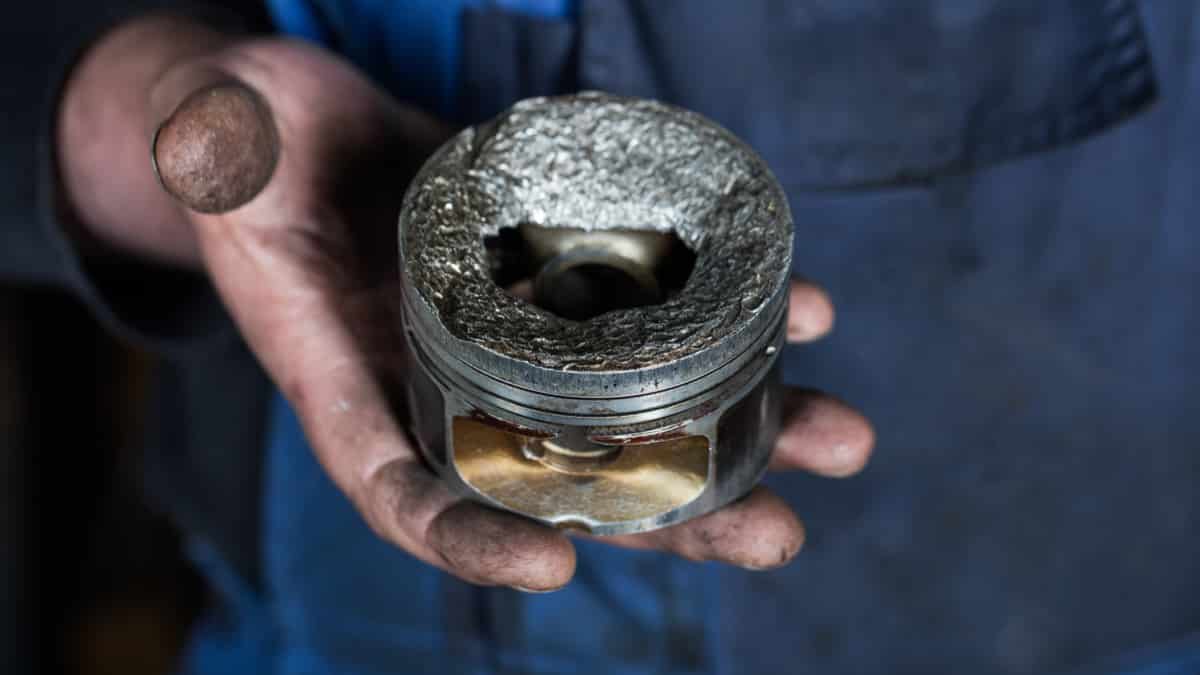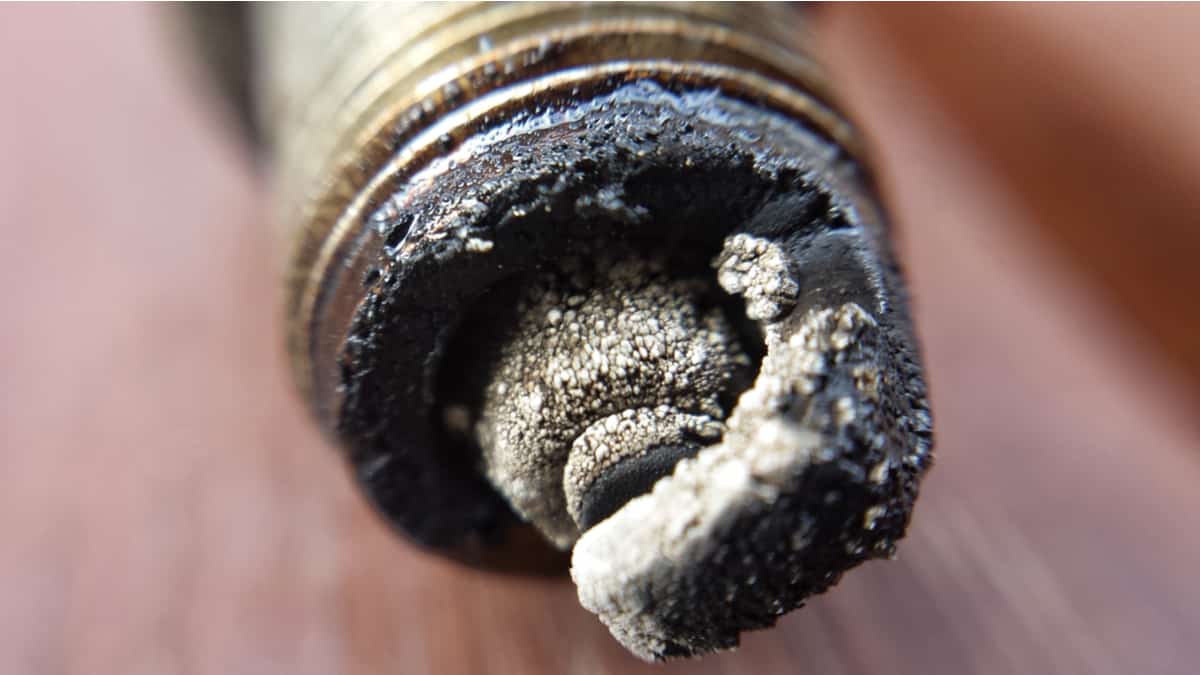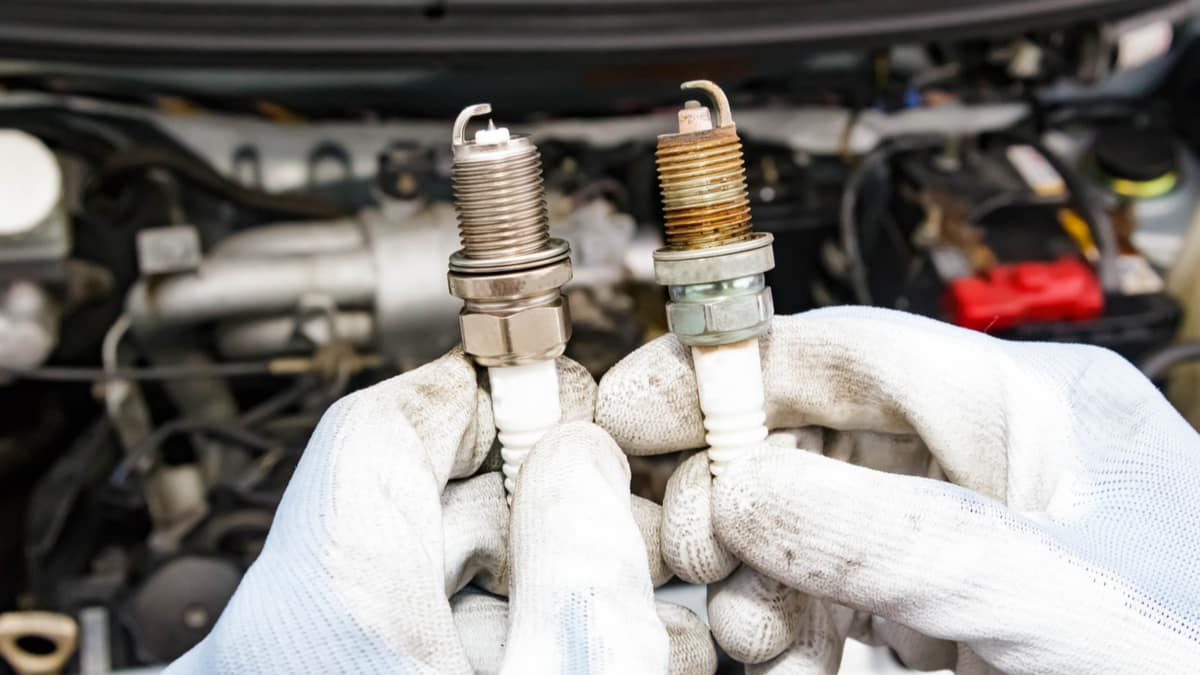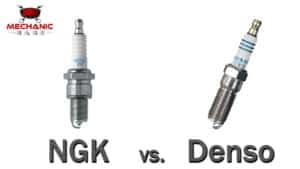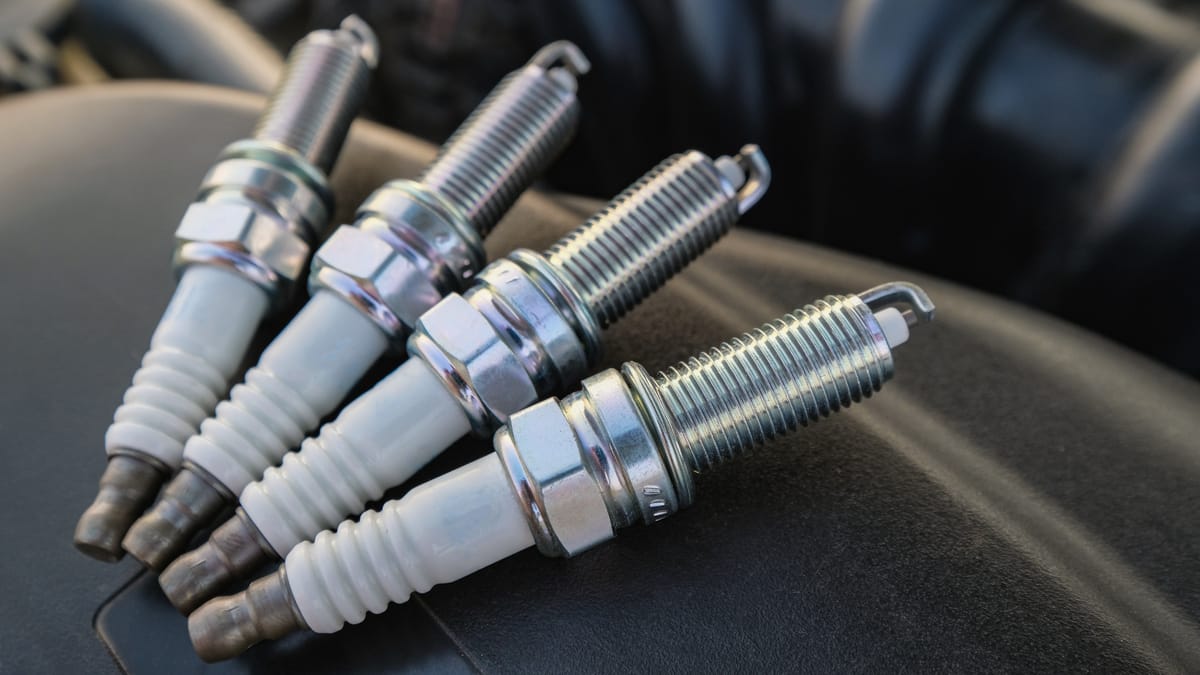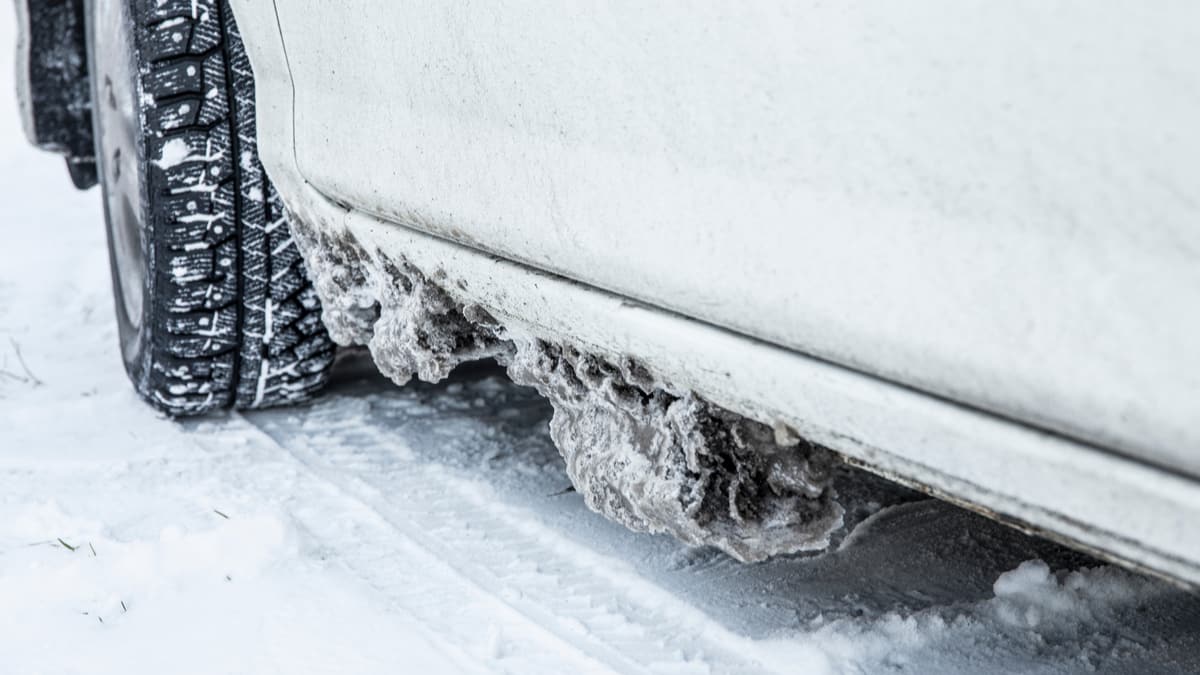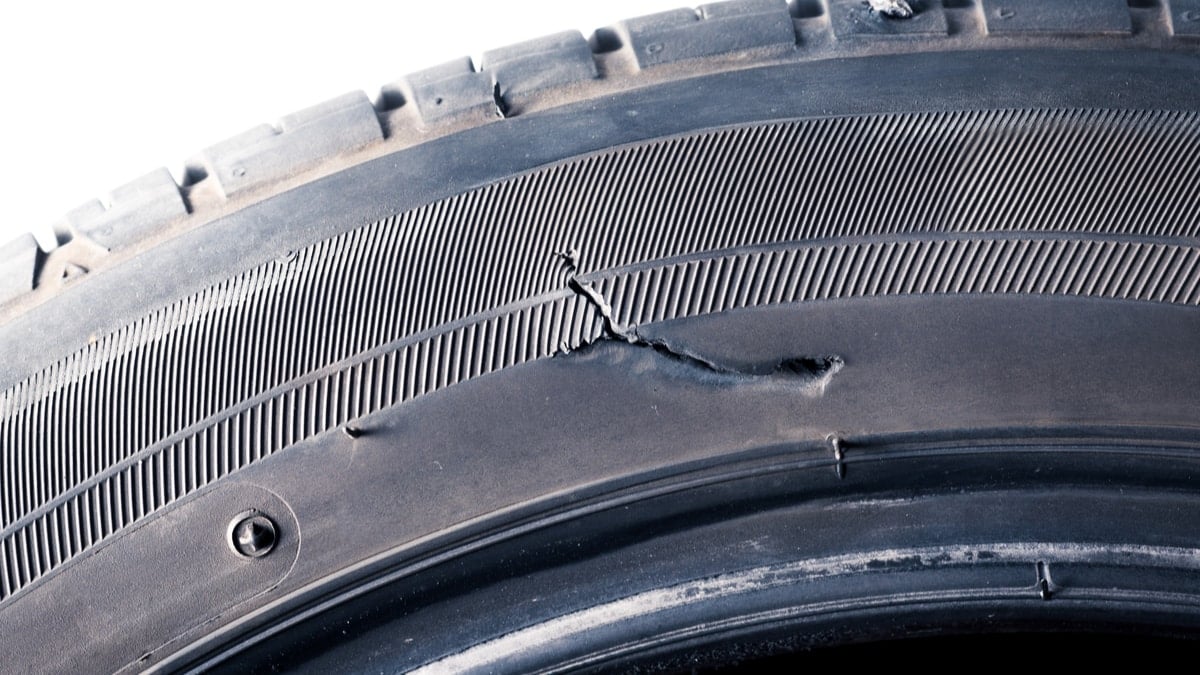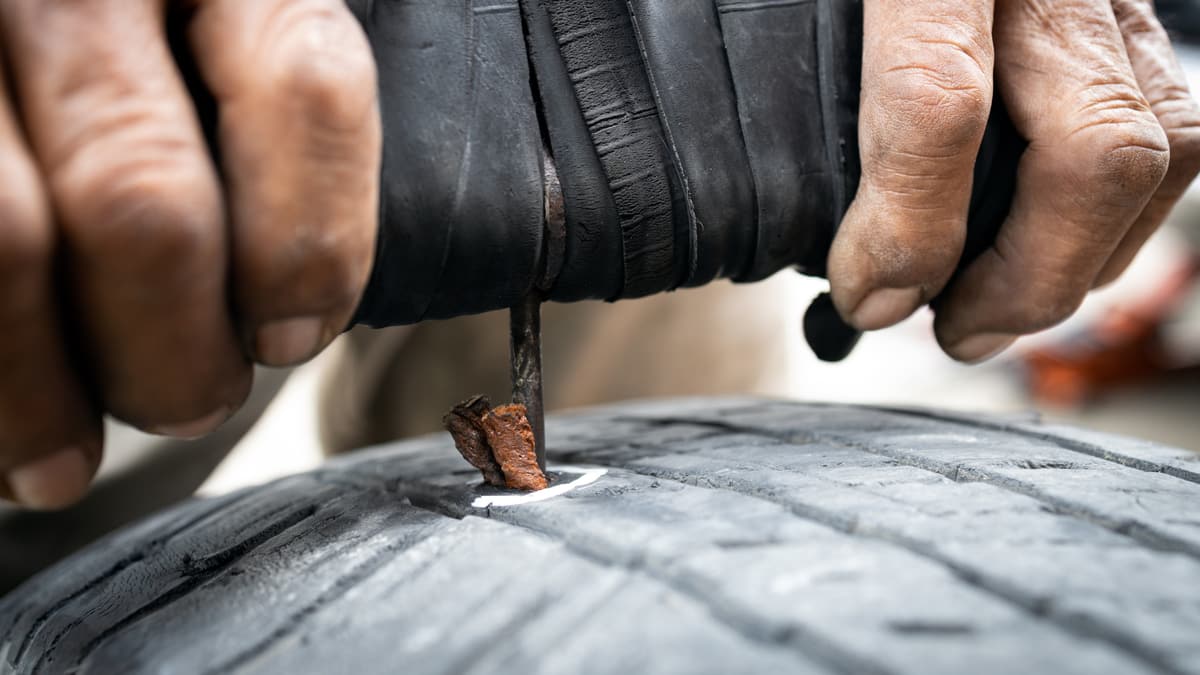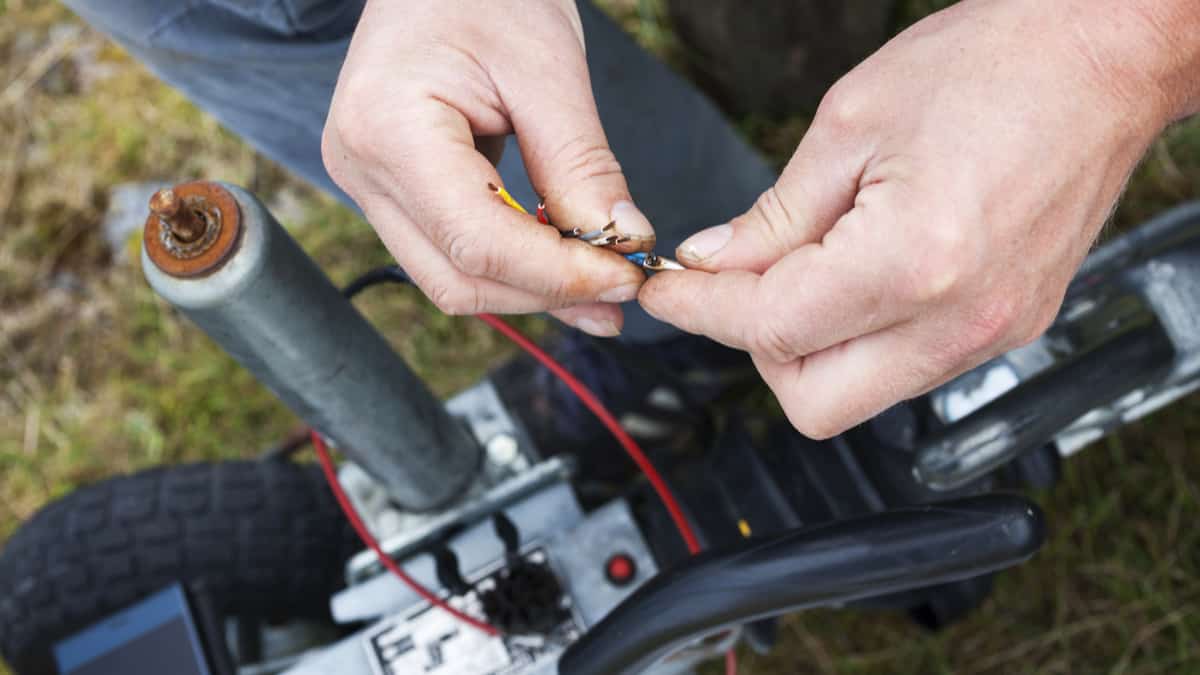Your car’s spark plugs are responsible for igniting the fuel-air mixture in the cylinders. When the spark plugs stop working as they should, car performance diminishes. One problem you need to watch for is when the spark plug tips become white. What do white spark plug tips mean, and what can be done about it?
In this guide, we answer all of your spark plug questions, including what causes them to be white. We also show you how to fix the problem, so you can get back to enjoying the open road.
What Does White Spark Plug Tips Mean?
When the tip of the spark plug turns white, it indicates that the engine is running too hot and lean. The spark plug tip has been burned. As oxygen meets with the spark plug, fuel impurities and iron oxide react to cause the white residue.
When the spark plug becomes white, you know you have larger problems on your hand. It’s not enough to change the spark plugs, you must also find the cause before it happens again.
Causes Of White Spark Plug Tips
Most often, the cause of the white spark plug tip is a lean air-fuel mixture. This can be caused by low fuel pressure, a bad engine sensor a bad fuel pump. It’s also possible that the spark plugs are simply old or you’ve purchased low-quality fuel.
Let’s look at these possibilities in-depth.
1. Lean Air Fuel Mixture (Main Reason)

The engine needs to have the perfect balance of air and fuel to run correctly. When the engine runs with too much air in the mixture, it’s defined as running lean.
The trouble with this problem is that multiple malfunctions can cause it. Let’s look at a few more of the most common issues.
LEARN MORE: Engine Running Lean – Causes, Symptoms & Fixes
2. Low Fuel Pressure (Lean Air-Fuel Mixture)
When a car has low fuel pressure, the engine runs lean. There’s too much air mixing with the fuel in the combustion chamber. Low fuel pressure can overheat the spark plugs, causing the white residue.
Low fuel pressure also leads to performance issues and a Check Engine Light. If the pressure is too low, the car won’t start at all.
3. Bad Engine Sensor (Lean Air-Fuel Mixture)
Multiple engine sensors keep the engine running balanced and optimized. These sensors are consistently measuring the flow of air and fuel while making necessary adjustments.
If one of the sensors fails to read properly, it can throw off the mixture. Some of the most defective sensors include oxygen sensors or mass airflow sensors.
4. Bad Fuel Pump (Lean Air-Fuel Mixture)
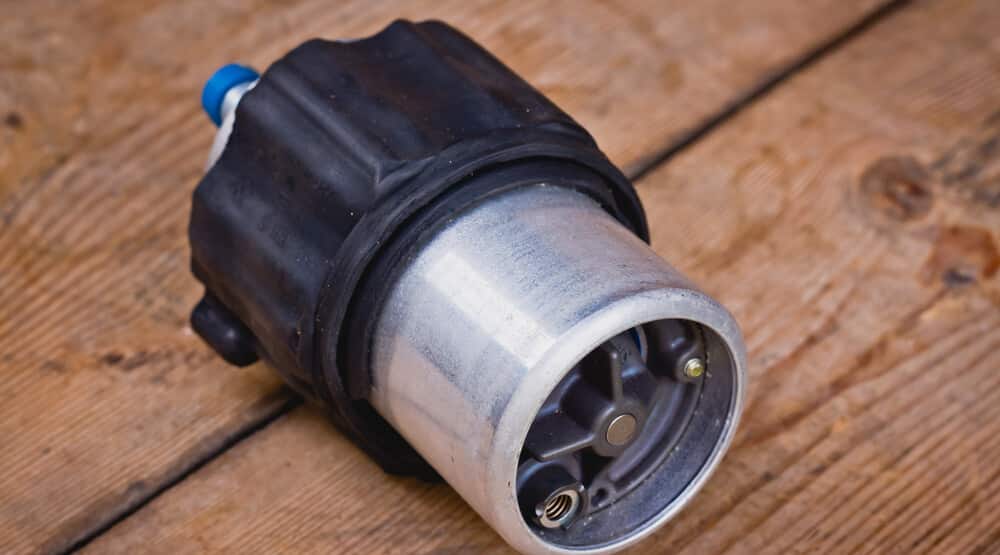
If the fuel pump fails to provide the right amount of flow and pressure at the rail or above the regulator, a lean-running condition can occur. This will set the Check Engine Light and put a code in the system, but it may be generic.
Additionally, a dirty fuel filter could be to blame. This problem causes many of the same symptoms as a bad fuel pump.
5. Old Spark Plugs
As the spark plugs become old and corroded, they can no longer ignite the air-fuel mixture normally. Combustion won’t occur correctly, causing an ignition delay. This problem creates a heat explosion.
You may have also chosen low-quality spark plugs. If the thermal range isn’t right for your engine, white substances can start to build up on the tip.
6. Low-Quality Fuel
If you don’t use top-tier fuel, you don’t know the quality of what you’ve put in the tank. With 145,000 fueling stations in America, you have a lot of places to choose from when the tank is empty.
If you choose fuel that has inadequate additives or has been sitting for a while, white deposits can form on the spark plugs. It can also contribute to wear of the fuel system, oxygen sensors and catalytic converter.
How To Fix White Spark Plug Tips
As professionals, we know what to do at the first sign of white spark plug tips. The key is figuring out what to do as a home mechanic, so you can also protect your engine from wear. Here are some tips to follow.
1. Replace Spark Plugs

There’s no reason to continue using the contaminated spark plug. At this point, you want to replace them and put in a new set, even if it’s not time yet. Depending on what type of plugs you use, the replacement time can be anywhere from 30,000 to 150,000 miles.
Can you change the spark plugs yourself? It depends on how the engine is configured. Some vehicles have spark plugs in the front, where they are easy to reach, while others are in strange locations. The last thing you want to deal with is a broken spark plug, so move on to step number five if you aren’t sure how to get them out.
RELATED: 6 Symptoms Of A Bad Spark Plug and Replacement Cost
2. Read Trouble Codes

If the Check Engine Light has come on, a code has been set in the engine. This code can offer a lot of insight into the state of the engine. With your compatible code scanner, read the DTCs to see what’s going on.
We have a handy online trouble code library that deciphers the most common faults. The chances are that the code will lead you to determine the mixture is lean, which brings us to the next step.
3. Diagnose and Fix the Lean Air-Fuel Mixture
We’ve discussed the various parts that can lead to an imbalanced air-fuel mixture. Now it’s your job to figure out what’s causing it. The trouble codes may be able to help you figure it out. By reading the trouble codes, you should get a clue of what is causing the lean air-fuel mixture.
If not, we recommend getting a factory service manual for your vehicle. It will lead you through all of the steps needed for diagnosis and also includes handy diagrams.
4. Use Better Fuel
If the issue is the fuel you are using, it’s time to switch providers. We’ve seen the benefits of using top-tier fuel and recommend it to everyone we come in contact with. It has the best detergents included, sure to keep the engine running its best.
Many of the top stations now offer top-tier fuel. Simply look for the sticker on the pump, showing the promise the location has made to provide only the best fuel.
5. Contact A Professional
The last thing you want to do is make matters worse. If you are looking at this guide and feel clueless, stop now and call a professional.
There’s too much that can go wrong when working with spark plugs and the engine. It’s not worth saving a few bucks if you make a bigger problem for yourself.
What Color Should the Tip of a Spark Plug Be?

The spark plug should have a light gray or brown firing end. If that’s what you see, everything is good and the plug is functioning as intended.
Otherwise, there are conditions that should cause alarm. Here are a few to consider.
- Ash deposits: from using fuel additives or when the piston rings are worn
- Carbon (wet or dry): insulation resistance between the shell and center electrode is reaching more than 10 ohms.
- Glossy/glazed: the spark plug has overheated and has melted deposits on the tip.
- Green: oxidation has occurred
- Oily: oil is seeping into the combustion chamber due to worn rings or valve seals
- Red: discolored because of unleaded fuel additives
- Yellow-brown: lead fouling has occurred
The spark plugs can tell a lot about the condition of a car. For that reason, it doesn’t hurt to inspect them occasionally, especially if the engine doesn’t seem to be running right.
RELATED: Fouled Spark Plug – Symptoms, Causes & How to Fix
What is the white ceramic on the spark plugs?
The ceramic material is the spark plug insulator. It’s a white body that wraps itself around the main terminal, which is made from an aluminum oxide composition. This insulator is meant to stand up against the pressure and heat created by the voltage that’s passing through the spark plug.
Are white spark tips good?
No, the white tips show that the spark plugs are getting too hot. In most cases, the problem is caused by a lean air-fuel mixture. The car may have a bad engine sensor, a failing fuel pump or low pressure. It could also be due to old plugs or that you have used poor-quality fuel.
What do rich mixture spark plugs look like?
When the air-fuel mixture is too rich, the spark plug tip becomes blacker. It can also have a glossy finish to it, indicating there’s too much fuel in the combustion chamber. What you want to see is a light gray or brown firing end, which is what a good spark plug contains.
What does the spark plug color tell you?
Because the spark plug has everything to do with igniting the air-fuel mixture in the cylinder, you can tell how the engine is running by looking at the tip. If everything is running as it should, the spark plug tip will be light gray or brown on the firing end. Otherwise, there’s a mechanical problem.
You don’t need to be an engine whisperer to know when something is wrong. The spark plug tip end is going to indicate a problem, maybe even before you notice any other symptoms. By performing regular maintenance and paying attention to how the engine runs, you can head off major problems before the repairs get too costly.
At the first sign of trouble, inspect the spark plug tip. If they are white, try figuring out what’s causing the engine to run lean. If you need more help, go ahead and reach out to your local mechanic because your car is worth it.
Categories: Engine, Troubleshooting




